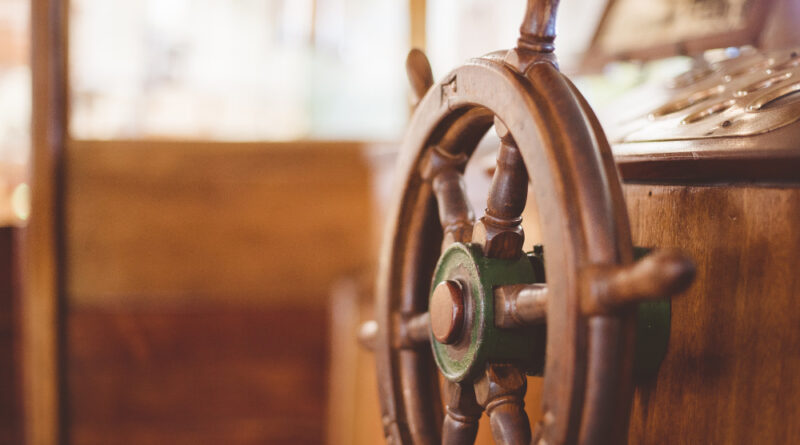Ship Parts Understanding the Mechanics of Maritime Vessels
Ships are remarkable feats of engineering, designed to withstand the harshest environments while carrying cargo and passengers across vast oceans. Behind every successful voyage lies a complex network of ship parts, each contributing to the vessel’s functionality, safety, and overall performance. Whether it’s the powerful engine that propels the ship, the intricate navigation systems that guide it, or the safety equipment that ensures the crew and passengers are secure, every ship parts play a critical role in ensuring the ship’s success at sea.
In this blog, we’ll take a deep dive into the essential parts of a ship, exploring their functions, importance, and how they work together to keep the ship operational.
1. Hull
The hull is the main body of the ship, the structure that provides buoyancy, protects the cargo, and supports the other parts of the ship. It is usually made from steel, aluminum, or other materials strong enough to withstand the pressures of the water and weather conditions. The design and shape of the hull also determine the vessel’s speed, stability, and overall efficiency. A well-designed hull helps reduce drag, allowing the ship to move smoothly through water and improve fuel efficiency.
Types of Hulls:
- Displacement Hulls: Common in larger ships, these hulls displace water to create buoyancy.
- Planing Hulls: Found in smaller boats, they rise above the water’s surface at high speeds.
2. Propeller
The propeller is the part of the ship that provides the thrust needed for movement. It consists of blades that rotate to push water backward, propelling the ship forward in the opposite direction. Propellers come in various sizes and materials depending on the type and size of the ship. They are typically powered by the engine and work in tandem with the rudder to control direction and speed.
Function:
- Converts engine power into thrust to propel the ship forward.
- Helps in maneuvering the vessel when combined with the rudder.
3. Engine Room and Machinery
The engine room houses the engine and associated machinery that powers the ship. The engine, typically a large diesel or steam engine, is responsible for generating power to turn the propeller and drive the vessel. The engine room also contains important auxiliary systems like generators, air conditioning systems, and fuel pumps. The engine’s performance is critical for the safe and timely operation of the ship, making the engine room one of the most important parts of a ship.
Key Components:
- Main Engine: The powerhouse that drives the propeller.
- Auxiliary Engines: Smaller engines that power the ship’s internal systems.
- Generators: Provide electricity for lights, communication, and navigation.
4. Rudder
The rudder is located at the stern (back) of the ship and is responsible for steering. By turning the rudder, the ship’s direction can be controlled. When the rudder is turned, it creates a force that redirects the water flow around the ship, helping to change the ship’s course. Rudders are typically controlled by a system of hydraulics, and in modern ships, advanced steering systems make them highly precise.
Function:
- Allows the ship to turn and maintain its course.
- Works in conjunction with the propeller for smooth steering.
5. Bridge
The bridge is the command center of the ship, where the captain and officers control navigation and operations. It contains essential equipment like radar, GPS systems, communication tools, and the ship’s helm (steering wheel). The bridge provides visibility for the crew to monitor the sea and navigate safely. It also houses the ship’s navigation and safety systems, including alarms and monitoring systems to detect any anomalies.
Key Equipment:
- Radar: For detecting nearby ships, land, and obstacles.
- GPS: Provides real-time positioning and course tracking.
- Navigational Instruments: Include compasses, speed logs, and depth sounders.
6. Cargo Hold
The cargo hold is the part of the ship where goods, freight, and other materials are stored during transportation. The cargo hold must be designed to handle various types of cargo, including bulk goods, containers, and hazardous materials. For larger vessels, the cargo hold is divided into several sections to ensure cargo is distributed evenly and safely. Proper loading and unloading mechanisms, such as cranes or conveyors, are also part of the cargo hold.
Function:
- Provides storage for goods and cargo.
- Ensures the weight is evenly distributed to maintain balance.
7. Ballast Tank
Ballast tanks are integral to the stability of the ship. These tanks are filled with water or other substances to provide the ship with the necessary weight and balance. By adjusting the ballast tanks, the crew can ensure the ship remains level in the water and counteract the effects of waves, cargo distribution, or heavy weather. In some cases, ballast is pumped out or replaced with water as the ship’s load changes.
Function:
- Helps maintain the ship’s stability and prevent it from capsizing.
- Allows the ship to adjust to varying load conditions.
8. Masts and Funnels
The masts and funnels serve both functional and aesthetic purposes on a ship. Masts, which support the ship’s rigging and sails on older ships, are now often used to carry communication and radar equipment on modern vessels. Funnels, or smokestacks, vent exhaust gases from the engine room. They are also an iconic part of a ship’s design, with different shipping companies often using unique funnel shapes to distinguish their vessels.
Function:
- Masts: Support equipment such as radar, antennas, and sails.
- Funnels: Vent smoke and exhaust gases from the engine.
9. Life Boats and Safety Equipment
Safety is a top priority when designing ships. Life boats, life vests, fire extinguishers, and other emergency equipment are crucial parts of the ship’s design. The lifeboats are used in case of emergencies such as shipwrecks or fires, allowing the crew and passengers to evacuate the vessel safely. Modern ships are equipped with advanced life-saving systems, including lifeboat cranes, fire suppression systems, and emergency medical kits.
Key Safety Equipment:
- Lifeboats: Small boats used for evacuation in case of emergency.
- Life Jackets: Personal flotation devices for passengers and crew.
- Fire Suppression Systems: Installed in key areas to prevent or fight fires.
10. Anchor and Anchoring System
The anchor is a critical part of the ship’s equipment, used to keep the vessel stationary when docked or in port. Anchors are heavy objects that are dropped to the seabed using a chain or cable. The anchor’s weight and design help secure the ship against currents, winds, and tides, preventing it from drifting away.
Function:
- Keeps the ship stationary at port or in calm waters.
- Prevents drifting caused by wind or sea currents.
Conclusion
Ships are complex and intricate machines that rely on a variety of parts working in harmony to ensure safe, efficient, and successful voyages. From the hull and engine room to the rudder, life-saving equipment, and advanced navigation systems, each ship part plays a vital role in its operation. Understanding the functions and importance of these parts highlights the level of engineering and attention to detail required to keep vessels running smoothly and safely across the world’s oceans. Whether you’re a maritime professional or simply fascinated by the mechanics of ships, these components form the backbone of maritime transportation, a key pillar of the global economy.



